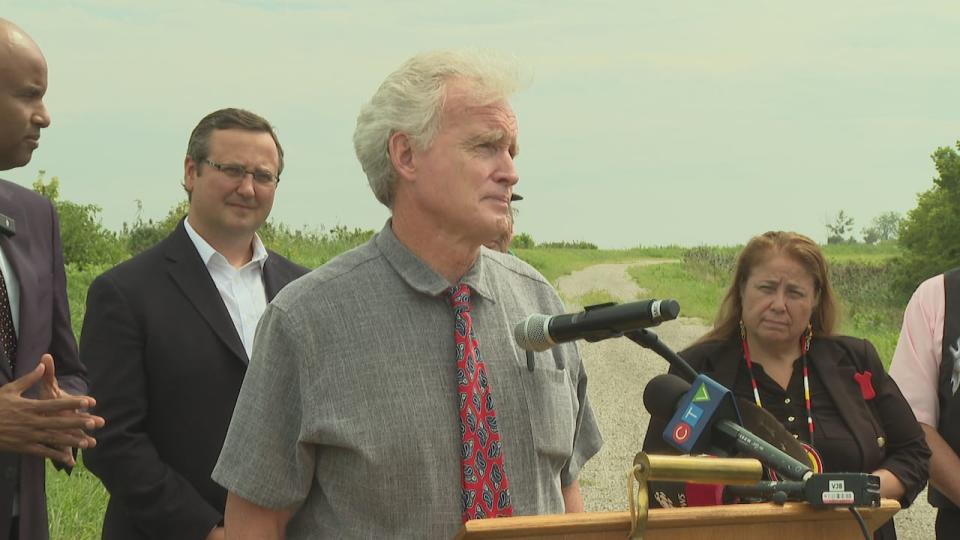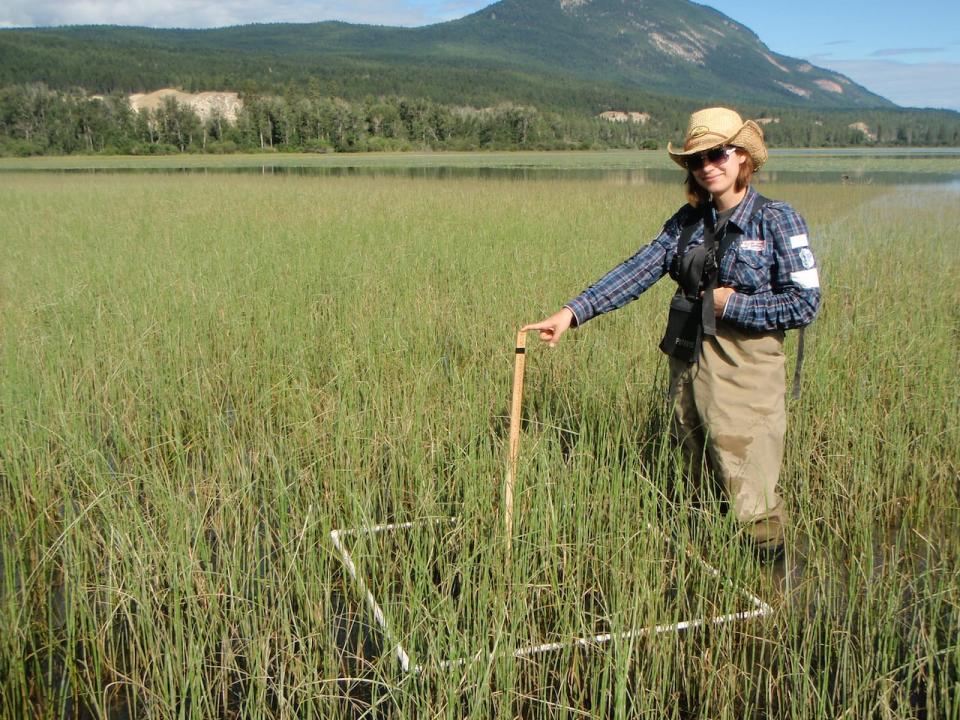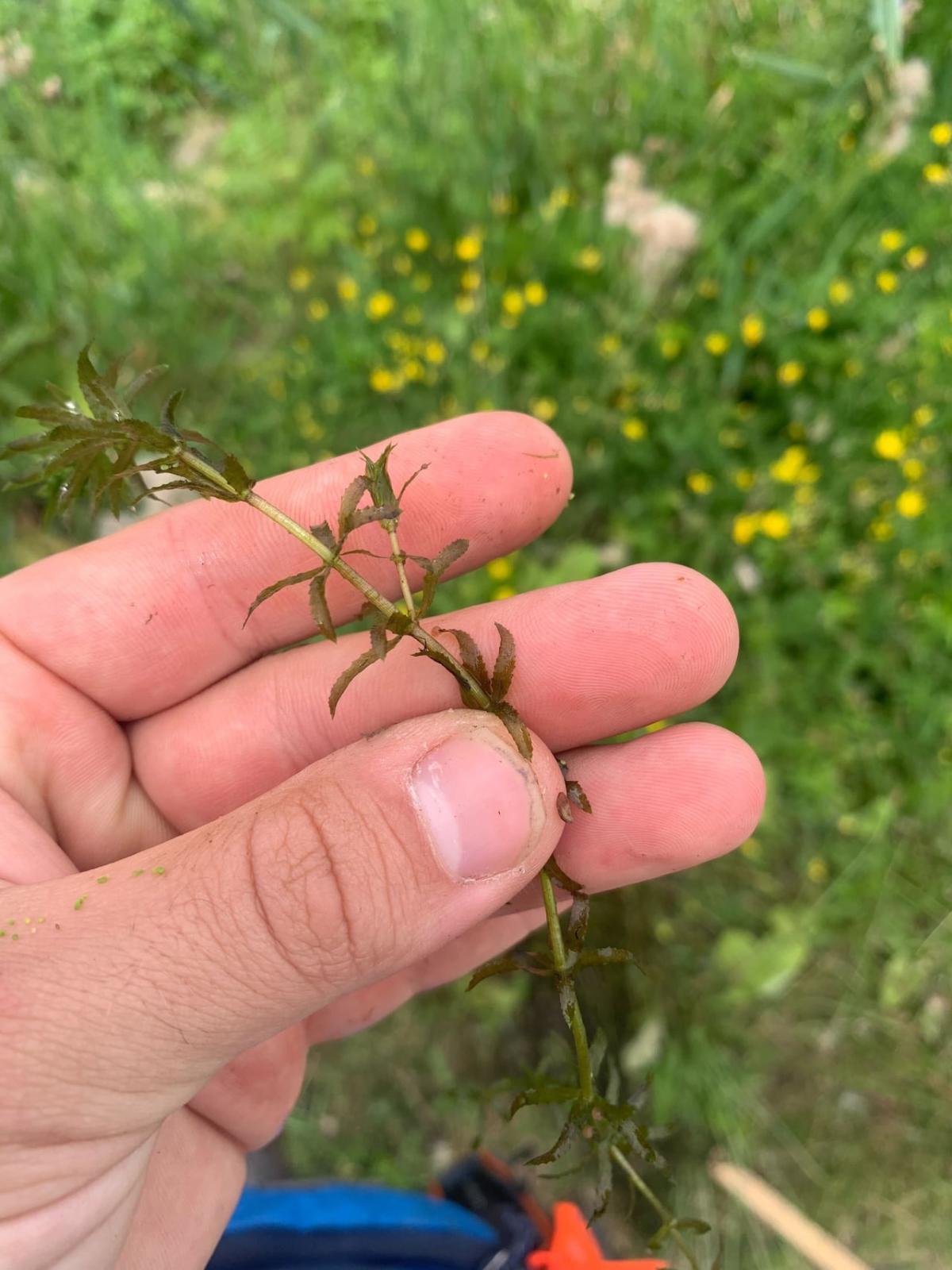A rapidly growing invasive plant that’s prohibited in Ontario has been discovered for the first time in Canada in the Hillman Marsh Conservation Area in Leamington, Ont.
Hydrilla can grow to 7.5 metres; clog water intake pipes and boat motors; and impede other recreational activities like swimming and paddling, according to a notice issued by the Essex Region Conservation Authority (ERCA).
ERCA has closed the west cell of the marsh — including the trail and boardwalk — because the plant is easily spread when boat propellers, kayaks, canoes, trailers, fishing and hunting gear, pets or people inadvertently carry attached plant fragments to new areas.
“The plant itself propagates extremely fast — 2.5 centimetres a day it will grow,” said ERCA chief administrative officer Tim Byrne.
“You can almost stand and watch this thing growing. Well, with that type of physiology, it will outcompete anything in the natural environment.”
Easy to spread
The plant is also extremely easy to spread, said Rebecca Rooney, an associate professor at the University of Waterloo and a wetland expert.
Not only does it produce seed; it can also spread through tubers, like potatoes do, and through above-ground buds called turians.
“Even the plant fragments can grow whole new plants,” Rooney said.
“So if you break the plant up either by, you know, trawling fishing gear through it or the propeller of your boat. That can produce like 1,000 new plants that can then spread.”
Hydrilla is native to Australia, Africa and parts of Asia, she said.

Tim Byrne of the Essex Region Conservation Authority said a single treatment against hydrilla will cost $125,000. (Jennifer La Grassa/CBC)
It likely ended up in North America as an aquarium plant.
It’s been spotted in Niagara on the U.S. side of the border but had never before been seen in Canada.
So far, surveys have shown that the infestation is limited to the contained wetland area of the west cell of Hillman Marsh that is not directly connected to Lake Erie, the conservation authority said in its notice.
That means it’s still possible to eradicate the plant rather than simply try to control it, Rooney said — though the affected area is not small: around 32 hectares.
Eradication costly
The process will be costly and complicated and could take five to 10 years, Byrne added.
“To effect control and eradication is going to mean basically destroying the vegetation and the vegetative communities that are within that cell,” he said.
“And within that cell was a full spectrum of natural vegetation ….What we have to use to actually eradicate hydrilla will harm and kill off those other native species.”
Once hydrilla is gone, however, the ERCA can reestablish the native plant specials, Byrne said.


Rebecca Rooney, a wetland ecologist at the University of Waterloo, said broken piece of hydrilla can sprout new plants, making it very easy to spread. (Chris Carli)
It will need help from the federal government, though, he added.
The cost to treat the cell is around $125,000 per treatment, and the cell could need two treatments per year for five to 10 years, he said.
“This is an invasive species that is going to require the type of response that Emerald Ash Borer did,” he said.
ERCA is currently working with the Ministry of Natural Resources and Forestry, the Invasive Species Centre, the Ontario Federation of Anglers and Hunters and other partners to assess the extent of the infestation, contain the spread, and develop plans to control the invasive species, it said in its notice.
Rooney urged people to learn how to spot hydrilla by looking up information published by the Invasive Species Centre and to report it if they see it.
“But the most important thing,” she said, “it’s … to clean, drain and dry your equipment. It’s actually a legal requirement in Ontario under the Invasive Species Act to clean, drain and dry your boat before you take it over land and launch it into new water. But with hydrilla here, it’s even more important to really thoroughly clean even your boots, any of your fishing gear. Any material that comes into contact with hydrilla could be a source of its spread.”

